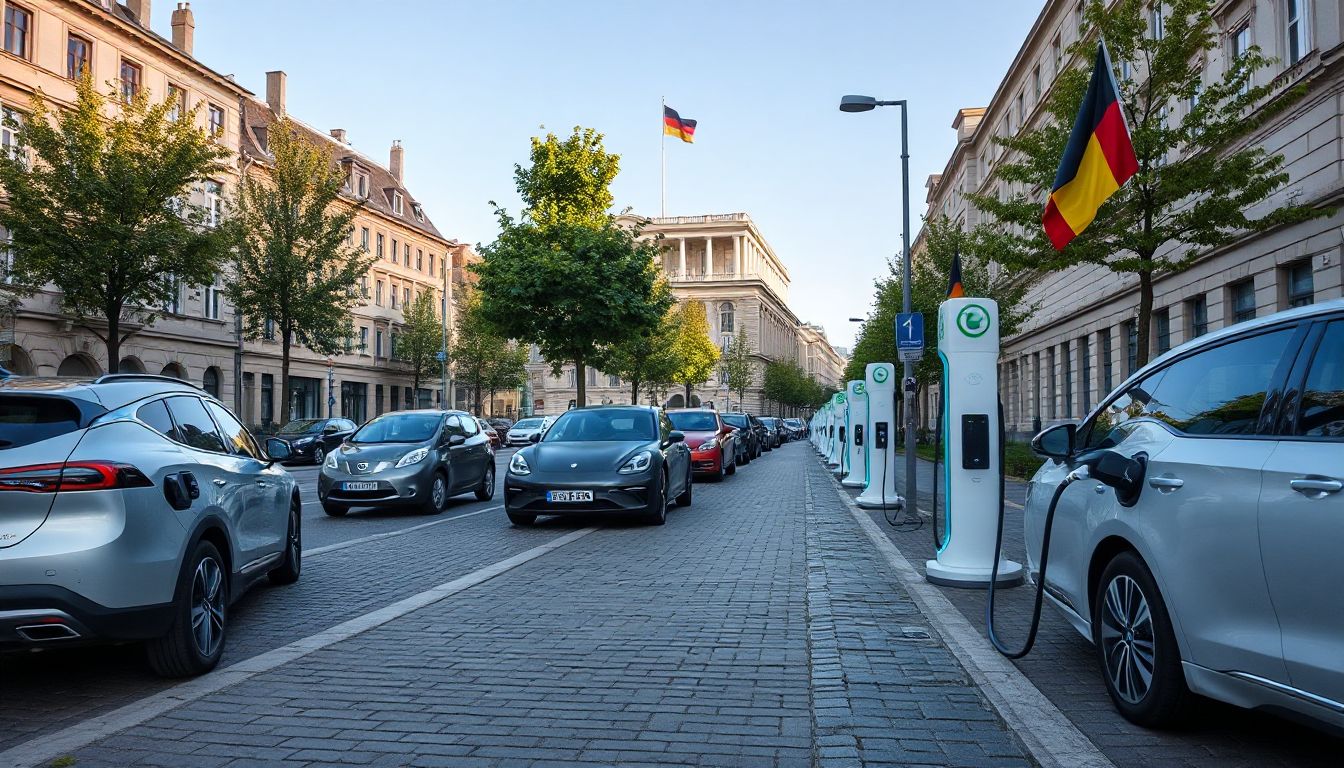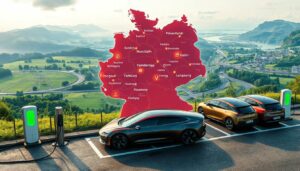Introduction
Germany is making big moves toward a cleaner environment by promoting electric cars. The country’s focus on sustainability has pushed new policies to help people buy electric vehicles more easily. Government subsidies play a key role in this effort. They make EVs more affordable and encourage more drivers to choose cleaner options. This article aims to give a complete guide on the current subsidies, who can qualify, how to apply, and what future plans might look like.
Germany’s Electric Vehicle Subsidy Landscape
Overview of National Incentives for EVs
Germany’s government offers strong support for electric cars through national incentives. These programs help lower the upfront cost of buying a new EV. Since the start of these subsidies, electric vehicle sales have surged, showing they work well. Germany’s push aligns with its climate goals and commitments to the European Union to cut carbon emissions. By boosting EV sales, the country aims to become a leader in green mobility.
State-Level Incentives and Regional Variations
Different regions in Germany also add their own perks on top of national offers. For example, Berlin has special grants for EV buyers, while Bavaria and North Rhine-Westphalia run their own programs. These regional efforts often include free parking, charging station discounts, or tax breaks. Some regions have seen incredible success with these schemes, making electric cars more accessible for their residents. This patchwork of incentives creates more options for prospective EV owners across the country.
Recent Policy Updates and Trends
Recently, Germany increased the amount of the subsidy for new EVs. Eligibility rules also shifted, making more people able to qualify. Future policies might further expand these incentives or introduce new ones as technology develops. Experts suggest that these programs need to stay sustainable, so subsidies don’t run out too quickly but still encourage growth. Discussions about scaling back or expanding subsidies are ongoing, with many eyes on long-term results.
Types of Subsidies and Financial Incentives Available
Purchase Price Subsidies
The main financial boost comes from direct grants when buying a new EV. Known as the “Umweltbonus,” this cash incentive cuts down the car’s purchase price. The amount varies but often ranges from 4,000 to 6,000 euros, depending on the vehicle’s battery size and emissions. To qualify, cars can’t cost more than certain limits, and buyers usually need to meet residency requirements.
Tax Benefits and Incentives
Owning an EV also grants several tax perks. These include lower registration fees, exemption from road tolls, and favorable company car taxation. For businesses, these incentives can lead to big savings over time. Tax benefits make electric cars more affordable overall, helping more people consider switching from gas to electric.
Incentives for Used Electric Vehicles
Not everyone buys new cars. Germany now offers subsidies for used EVs that meet strict standards. These programs aim to grow the used EV market and help more people afford greener rides. The application process is similar to new EV incentives but might involve additional inspection steps. Since used cars are cheaper, these incentives attract budget-conscious buyers and increase overall EV adoption.
Additional Incentives and Support Measures
Beyond purchase grants and tax breaks, Germany supports EV infrastructure. Governments offer subsidies for building charging stations nationwide, making it easier to charge electric vehicles anywhere. There are also incentives for fleets of commercial electric vehicles, helping companies go green. Plus, investment flows into research and innovation in EV tech, ensuring the market keeps advancing.
Eligibility Criteria and Application Process
Who Qualifies for the Subsidies?
To get subsidies, your vehicle generally needs to be new or certified used electric cars under certain price limits. The buyer must be a resident of Germany or the EU. Income levels or first-time buyer status may matter for some programs, especially those aimed at low-income people. It’s important to check the specific rules for each incentive to see if you qualify.
How to Apply for Incentives
Applying for these subsidies involves a few simple steps. First, buy your EV from an authorized dealer or seller. Then, fill out an application form provided by the government or local authorities. You’ll need proof of purchase, your ID, and sometimes documentation of your residency. Carefully review the application to avoid errors that could delay approval. Submitting the form early helps ensure you get your subsidy before funds run out.
Deadlines and Funding Limits
Current programs have specific deadlines, so don’t wait too long to submit your application. There’s often a cap on how much total money is available, which means funding can run out if too many people apply at once. Act quickly, especially when new rounds open or policies change. Staying ahead ensures you don’t miss out on these financial perks.
Benefits and Challenges of Germany’s EV Subsidy Program
Positive Impacts on EV Adoption and Environment
Since these subsidies started, more Germans are buying electric cars. Data shows a sharp rise in EV registrations, helping the country meet its climate targets. These programs lower the cost barrier, so more consumers can switch from gas to clean energy cars. The shift reduces carbon emissions and makes cities healthier places to live.
Challenges and Criticisms
However, funding sustainability is a concern. With growing demand, some question if the green subsidies will stay affordable long-term. Not enough charging stations is another obstacle, limiting practical use for new EV owners. Critics also point out that subsidies might favor wealthier buyers, making access uneven. These challenges need attention to maintain progress.
Industry Insights and Perspectives
Industry experts agree that subsidies jumpstart EV growth but need to be part of a bigger plan. Many say that investing in charging infrastructure and public awareness is equally essential. Policymakers should keep improving these incentives and remove hurdles to help everyone benefit from cleaner mobility.
Future Outlook and Recommendations
Anticipated Policy Developments
We can expect Germany to tweak its EV subsidies based on market needs and technological progress. There might be bigger incentives for larger batteries or newer EV models. EU efforts to unify electric mobility policies could also influence Germany’s future policies. Advances like solid-state batteries may lead to new types of incentives.
Actionable Tips for Consumers and Stakeholders
Buyers should stay informed about current incentives, as rules change often. Look for regional advantages that could boost your savings. Policymakers should focus on making these programs simple to access, transparent, and sustainable. Car manufacturers and dealers can also help by promoting EV benefits and guiding customers through application processes properly.
Conclusion
Germany’s EV subsidy programs are a powerful tool to promote clean transportation. They make electric cars more affordable and support the country’s climate goals. If you’re thinking about switching to electric, now is the perfect time to explore available incentives. Take advantage of these programs—your greener, cheaper ride is closer than you think. With ongoing support and future reforms, electric mobility is set to grow faster across Germany, leading us all toward a cleaner future.




